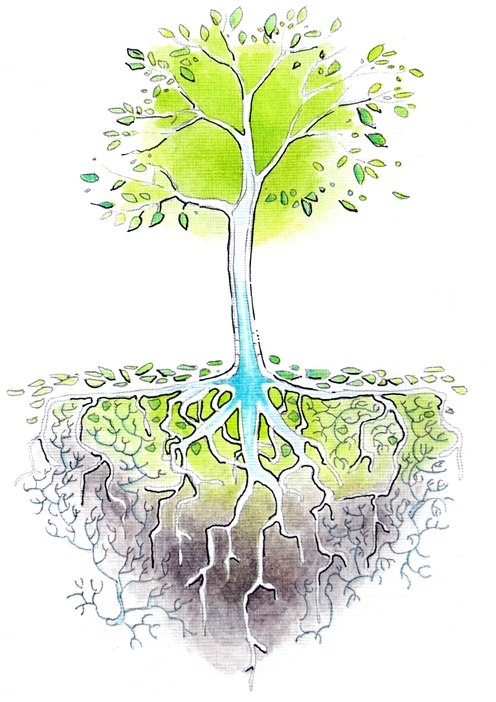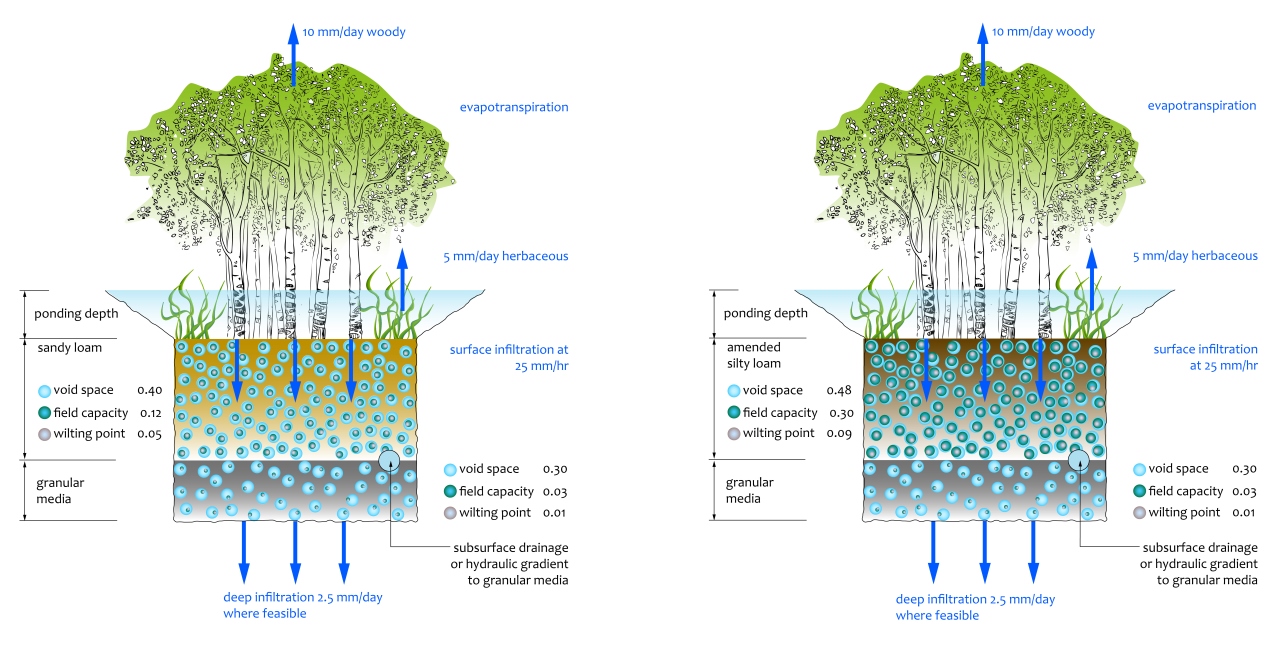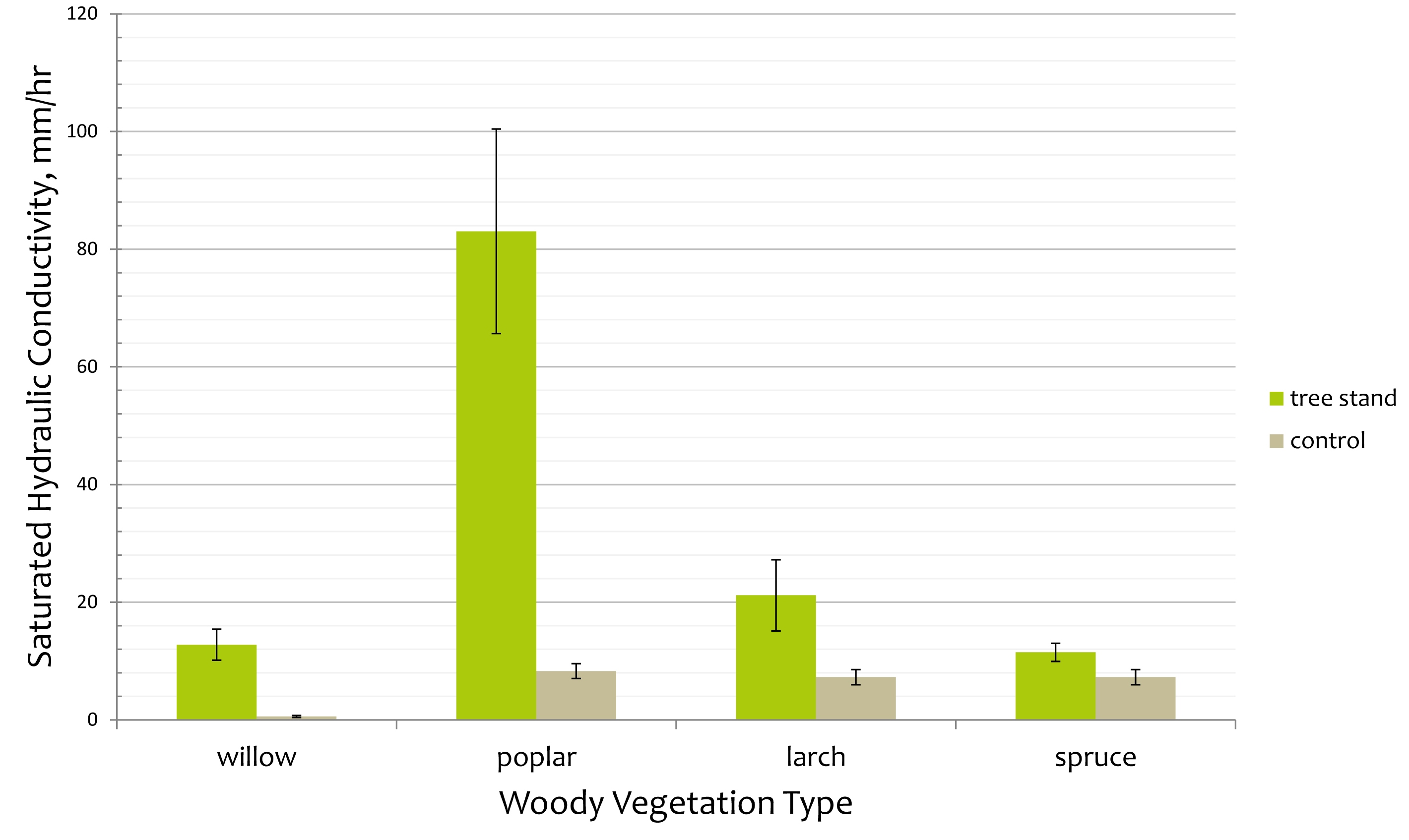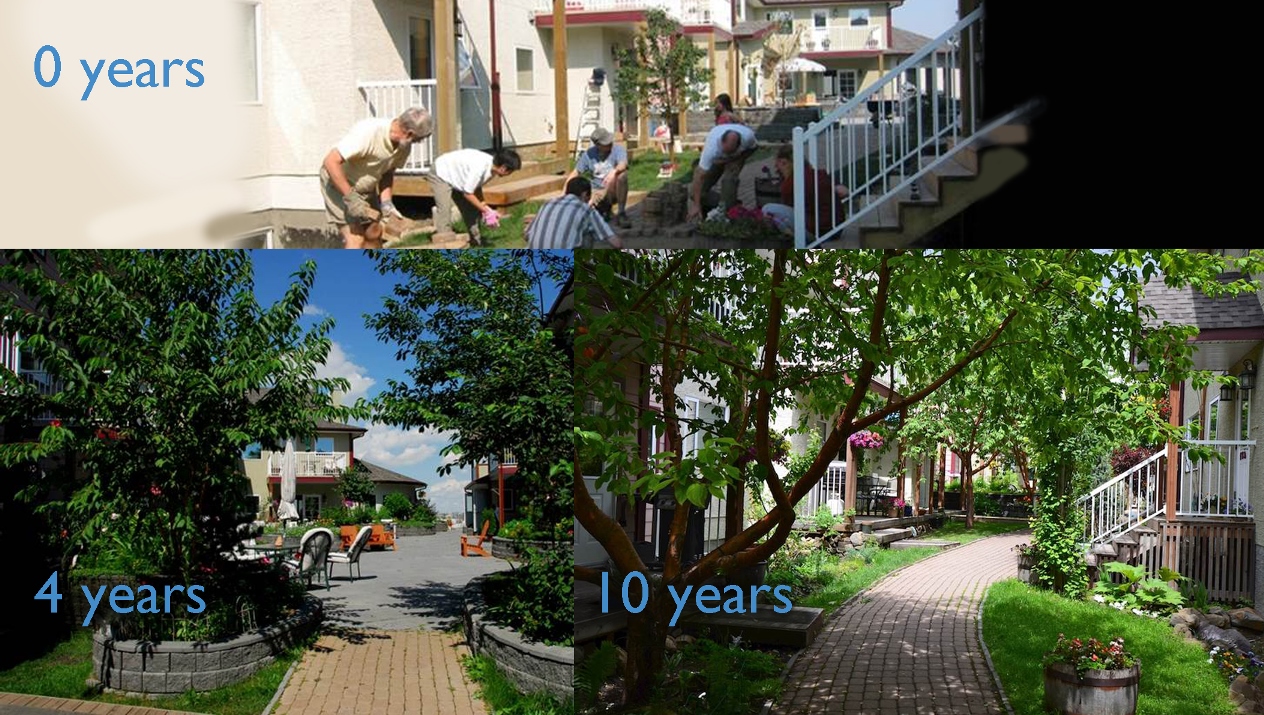An alternative approach is one that focuses on LID features as systems where living organisms play a vital role in hydrological functionality. The living organisms that are of greatest functional relevance to stormwater management are plants and soil microorganisms. These organisms play a crucial role in soil formation and hydrology. These organisms possess the biochemical capacity to breakdown various contaminants that could be present in stormwater. These organisms also require water, nutrients, and essential elements to function. Sandy mixes provide limited support for biological activity, which puts sand-based LID systems at risk of failure. Source2Source Inc. approaches LID system design by identifying conditions that benefit the living organisms the most, and ensure their successful proliferation. The soil medium is not approached as a collection of individual particles that allow water to move between them, but as a system that goes through change and provides resources for plants and microorganisms. Soils characterized by finer particles, such as silt and loam, offer greater relative stores of water and nutrients than sandy soils do.
Water that enters any soil by infiltration is restricted in its movement to the soil pore space and is subject to gravitational and inter-molecular forces. The gravitational force is not related to the type of soil, and will always induce downward water movement. The inter-molecular forces vary among different soil types. Loam has a greater degree of inter-molecular interactions than sand does due to the differences in the nature of their particles. The inter-molecular interactions between water and soil particles are responsible for retaining water in the surface soil horizons, where it can be available for plants and microorganisms. The fraction of soil water that can be retained by a particular soil type following saturation and gravity drainage is referred to as field capacity. The field capacity of loam can be up to 3 times greater than the field capacity of sand. The diagram below represents a general comparison of soil water parameters of sand and loam soils in a typical LID setting, and the differences in the relative proportions of water that can be stored within the bulk of LID media and water that can be returned to the atmosphere via evapotranspiration.




